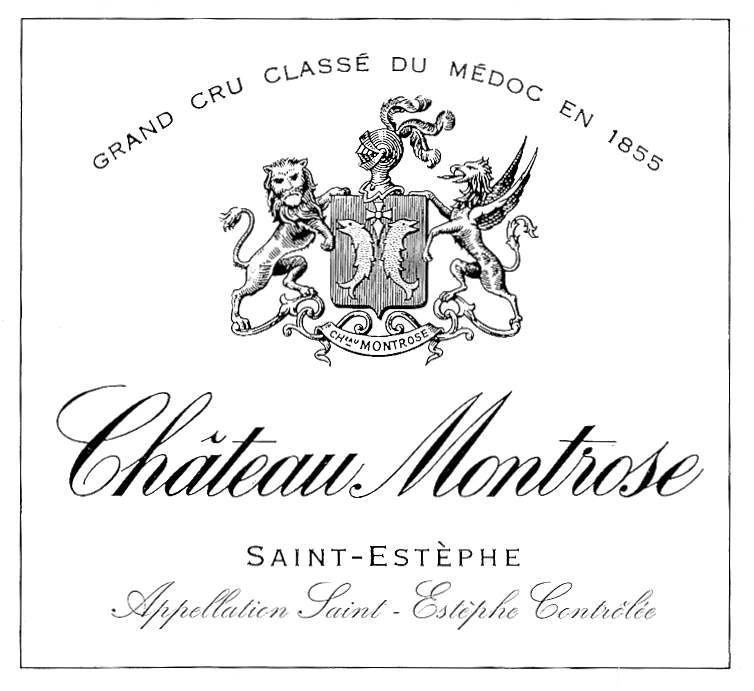Château Montrose 2018
Review of the Estate
Chateau Montrose began as a plot of heather-covered land that was bequeathed to Thèodore Dumoulin by his father Etienne. The land at Chateau Montrose was originally part of the Calon-Sègur estate that Etienne acquired in 1778. By 1820, Thèodore had constructed a small chateau and vine plantings were already underway. Eventually the area was split from the greater Calon-Sègur estate and was renamed as Montrose-Sègur. By 1855 it had expanded to 50 hectares and was known simply as Chateau Montrose. At this point it was also classified as a deuxième cru (Second Growth).
Eventually Chateau Montrose was sold to M. Mathieu Dolfus, shortly after the passing of Thèodore. Under Dolfus, the cellars at Chateau Montrose were greatly expanded and he invested heavily in estate developments and infrastructure. This included the creation of a programme that provided benefits for vineyard workers and the construction of a small railway to transport wine from Chateau Montrose down to the riverside.
Soon after Dolfus passed away, in 1896 Chateau Montrose came into the ownership of the Charmolue family, who safely shepherded the chateau through the phylloxera epidemic and two World Wars, including the recovery process after the estate suffered bomb damage in WWII.
In 2006 Chateau Montrose was purchased from the Charmolue family by brothers Martin & Olivier Bouygues and they remain the current owners. However, in recognition of the important role that the Charmolue family played in the history of Chateau Montrose, the name of the estate's second wine, La Dame de Montrose (named for Yvonne Charmolue, who ran the estate from 1944 to 1960) remains unchanged.

Vineyard
Surface area: 169.2 acres
Grape Varieties: 65% Cabernet Sauvignon, 25% Merlot, 8% Cabernet Franc and 2% Petit Verdot
Average age of vines: 43 years
Density of plantation: 9,000 vines per hectare
Average yields: 42 hectoliters per hectare
Average cases produced: 16,500 per year
Plateau of maturity: 3 - 25 years post-1970, 15 - 25 years pre-1970
Château Montrose 2018 Reviews / Tasting Notes
Lisa Perrotti-Brown - The Wine Advocate
Point Score: 98+
The 2018 Montrose is a blend of 72% Cabernet Sauvignon, 20% Merlot, 6% Cabernet Franc and 2% Petit Verdot. Very deep garnet-purple in color, it needs a good amount of air to unlock the vibrant scents of crushed blackberries, preserved plums and cassis with suggestions of star anise, cedar chest, underbrush, Indian spices and iron ore, plus an emerging waft of violets. The full-bodied palate features the most exquisitely ripe tannins, offering a rock-solid backbone with tons of freshness lifting the taut, muscular fruit, finishing long and mineral laced. Going back to this wine over a period of hours and then days further reveals a Montrose of great opulence, richness and depth. Incidentally, the IPT level this year is 82, which indicates a very high level of tannins, and yet they are so, so ripe. The alcohol is around 14.5%. But sit back, close your eyes and forget the numbers-this is pure hedonism in its youth with a fantastic 40+ years of cellaring ahead of it, during the course of which do not be at all surprised if you are blown away by a three-digit experience.
Decanter
Point Score: 97
This is wonderfully rich, with the precision of 2016 but the seductive quality of 2009. It feels architectural in the way that truly great vintages do in the Medoc, and it seems to have consumed its alcohol rather effortlessly. There's plenty of liquorice and exuberant but well buttoned-down brushed damson and cassis pit notes that maintain the signature of Montrose. You can see the concentration in the legs and in the depth of the colour. 20% press wine was added, which is typical here, but the vintage yielded an extremely low 25hl/ha, due partly to drought, partly to mildew and partly to coulure - with drought accounting for most of that/ The Cabernets were affected more than the Merlots because of the later harvesting (which ran from 17 September to 5 October), which meant careful sorting was essential. A good 3.7pH has definitely helped it maintain its balance and sense of minerality, but for me the 2016 remains the one to beat. 2% Petit Verdot makes up the blend. Phenolic count of 81IPT.
James Suckling
Point Score: 98
Purity and beauty on the nose with blackberry, blueberry, raspberry, crushed-stone and violet character. A full-bodied red with masses of polished tannins and intense flavors of currants and blackberries. Juicy finish. Super depth to this. Goes on for minutes. Try after 2027.